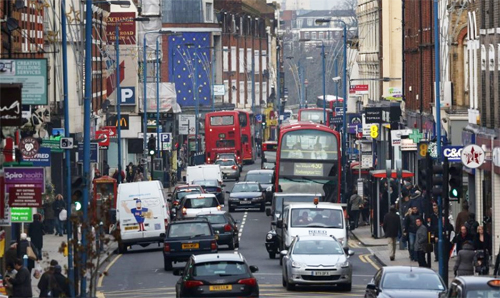
Urban health and wellbeing: why designing better places benefits us all
Blog by Dr Kelly Watson and Professor James Evans
City dwellers have a 40% increased risk of depression, 20% higher risk of anxiety, and double the risk of developing schizophrenia compared to people who live in the countryside (Peen et al, 2010).
In the next 20 years another two billion people will be living in cities, added to the three billion of urban dwellers today. According to Jason Vargo, a US anthropologist, we are witnessing the birth of humanity as an urban species: the Metro sapiens. Learning how to support the long term health of this urban species is one of the greatest challenges of the 21st century.
The Future Health Report explains how our view of health is changing from a medical to a social model. The social model focuses on changes that can be made in society and in the lifestyles of individuals to make the population healthier. This means good health is determined not simply by access to medical care, but by a range of factors, many of which are closely related to the quality of the urban environment. Where we live is strongly related to our risk of developing obesity, type 2 diabetes and heart problems. In fact, the UK has one of the world’s highest rates of childhood asthma with about 15% affected 8 years ago, a figure likely to have increased with air pollution rises. A growing and persuasive body of evidence is showing how the design of buildings, streets, parks and neighbourhoods can support good physical and mental health, reduce health inequalities and improve wellbeing.
Research at Manchester Urban Institute is actively tackling this agenda. The Well Cities project, funded by the ESRC Impact Accelerator Account, is refining and mainstreaming a wellbeing valuation toolkit for application across the built environment, public realm and blue-green spaces in cities.
We know that good urban design improves economic productivity, educational attainment in schools, recruitment and retention of staff, community cohesion, social capital, civic pride, safety and crime rates, and sense of place. It is now seen as a smart commercial decision to promote healthy and green buildings, campuses and cities for a resilient future.

In the next 20 years another two billion people will be living in cities.
The growth of the health agenda in cities depends on being able to make the business case for wellbeing. Decision-makers need an evidence base that shows them exactly which design elements in cities and buildings provide the most health and wellbeing benefits. The Well Cities toolkit uses an academically proven approach to provide evidence about the co-benefits of different kinds of urban spaces and places for commissioners, developers and decision-makers. It combines quantitative wellbeing data collected using a validated survey with social impact techniques to place values on the wellbeing scores and generate return on investment figures for urban design. Rather than measuring the performance of the building, development or city, in the way that existing assessment tools like BREEAM and the Happy City Index do, Well Cities focuses on measuring the impact of urban design on end users. Unlike approaches like Health Impact Assessment, Well Cities collects primary data from those being impacted rather than relying on secondary datasets. It helps urban designers learn what works by linking urban design to monetised wellbeing outcomes, rather than providing visual summaries of user benefits, like those produced by the Place Standard.
Well Cities translates findings into evidence that speaks to the real business case for wellbeing, whether it’s through estimating healthcare cost savings, productivity profits or recreational spending. This means that investors, commissioners and developers can understand the exact return on investment from people-centred environments, which is a critical pathway for alternative funding models. The NHS Healthy New Towns programme is an example of large scale partnership funding to shape the health of communities through 10 demonstrator housing developments. A wide number and variety of partnerships came forward to the programme, ranging from smaller developments of under 1,000 homes to large scale projects of over 10,000 housing units. Understanding how to attract and set up partnerships, learning what works in collaborations, where the bottlenecks are, and how to make partnerships more viable is an important part of the way our cities will be funded in the future.
Understanding the importance of where we live to our health and wellbeing is essential to if we are to build cities that are fit for purpose. Doing this requires interdisciplinary research and cross-sector collaborations to connect low carbon and digital solutions to health and wellbeing outcomes, and develop methodologies that are flexible and produce actionable knowledge. Well Cities is starting to plug this gap.
Reference
Peen J, Schoevers RA, Beekman AT, Dekker J. 2010. The current status of urban-rural differences in psychiatric disorders. Acta Psychiatr Scand. 121(2):84-93.

0 Comments